London, a city steeped in millennia of history, has evolved from prehistoric settlements to a global powerhouse. This article delves into the foundational periods of its existence, exploring its ancient origins, the impactful Roman occupation, and the vibrant, yet challenging, daily life of medieval London. Join us on a journey through time to uncover the layers of history that shaped one of the world’s most iconic capitals.
I. The Ancient History of London: From Prehistory to Roman Foundation
The story of London begins long before the Romans set foot on its soil, stretching back to evidence of human activity from the Stone Age.
A. Prehistoric London: Early Settlements and Indigenous Cultures
- Paleolithic and Mesolithic Traces: Evidence of human occupation dating back half a million years, with early inhabitants drifting south during the Ice Age. Discoveries near the Thames, such as at Fulham Palace, indicate Mesolithic and early Neolithic activity, including the use of struck flint.
- Bronze Age and Iron Age Discoveries: Remains of a Bronze Age bridge (1993) and large timber structures (4800-4500 BC) have been found on the Thames’s south foreshore near Vauxhall Bridge, suggesting very early settlements. Researchers have also found evidence of Iron Age forts.
- Celtic Tribes and Early Inhabitants: London’s area was later settled by Brittonic-speaking Celtic tribes. Prior to 100 BC, the Belgae, from north-eastern Gaul, invaded southeastern Britain, influencing the local tribes like the Catuvellauni and Trinovantes.
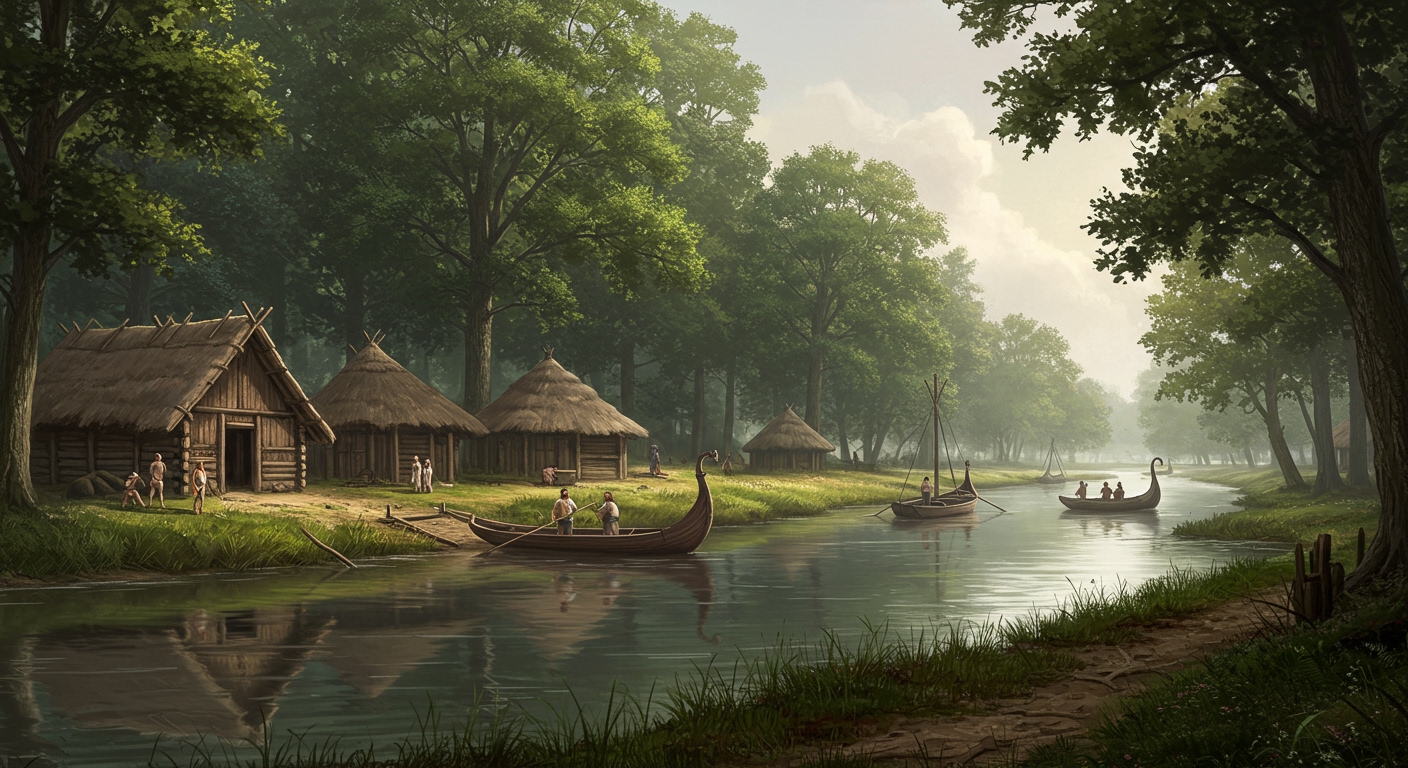
B. The Roman Arrival and the Birth of Londinium (AD 43 – 410)
- Strategic Foundation: Londinium was established as a civilian town by the Romans around AD 43, approximately four years after their invasion of Britain. Its strategic location on the River Thames, at a point narrow enough to bridge, provided easy access to much of Europe.
- Boudica’s Revolt and Rebirth: Around AD 60, the Iceni, led by Queen Boudica, sacked and destroyed the early Roman settlement. The city was swiftly rebuilt as a planned Roman town, recovering rapidly over the subsequent decades.[1]
- Growth and Diversity: By the 2nd century AD, Londinium was a bustling city with a diverse population drawn from across the Roman Empire, including natives of Britannia, continental Europe, the Middle East, and North Africa.
- The London Wall: Between AD 180 and 225, the Romans constructed the defensive London Wall around the landward side of the city, remnants of which can still be seen today.
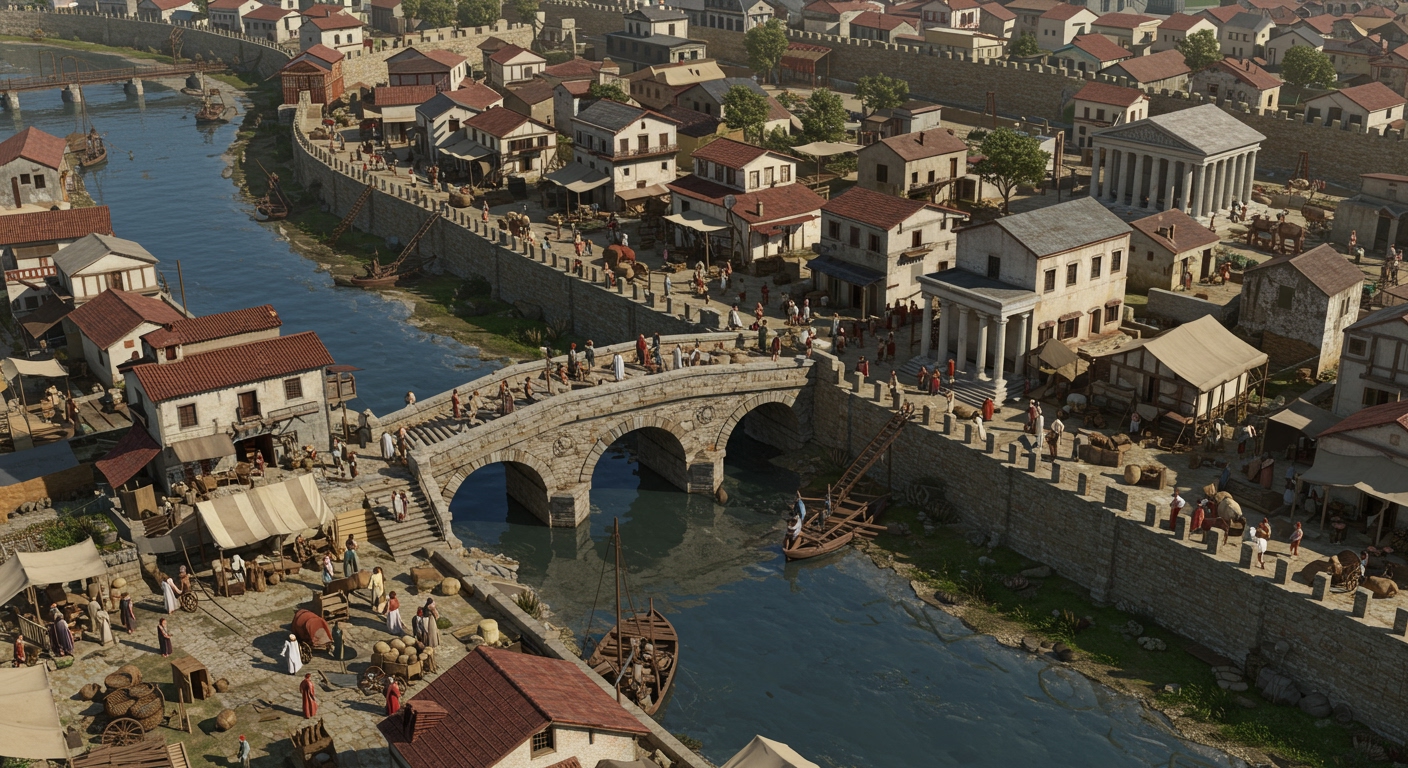
II. Roman London Historical Sites: Unearthing the Past
Numerous archaeological discoveries have brought Roman Londinium to life, allowing visitors to glimpse the city’s ancient past. These Roman London historical sites offer tangible connections to a distant era.
A. Major Archaeological Sites and Remains
- London’s Roman Amphitheatre: Located beneath Guildhall Yard, this spectacular arena, discovered in 1988, was first built around AD 70 and could seat 10,000 spectators. Its remains are now a permanent exhibition.
- London Mithraeum Bloomberg SPACE: This site houses a reconstructed 3rd-century AD Roman Temple of Mithras, uncovered in 1954. Visitors can experience the temple ruins and over 600 unearthed artifacts.
- Billingsgate Roman House and Bath: Discovered in 1848, the remains of a 2,000-year-old Roman home and bathhouse are preserved beneath an office block, offering a rare insight into domestic life.
- The London Stone: A mysterious ancient landmark with origins potentially tracing back to Roman times, traditionally associated with the city’s prosperity.
- Remnants of the London Wall: Visible sections of the Roman city wall can be found in various locations, including a carefully preserved subterranean chunk at Vine Street.[2]
B. Other Notable Roman Discoveries
- Roman Floor at All Hallows by the Tower: Fragments of a 2nd-century Roman tessellated floor and plastered wall can be seen in the crypt museum of this historic church.
- Southwark Cathedral Roman Road: Remnants of the original Watling Street, a 1st-century AD Roman road, are visible inside the entrance to Southwark Cathedral.
- Crofton Roman Villa (Orpington): The only remaining Roman villa in London, once the center of a farm estate, providing insight into rural Roman life.
- Greenwich Park Roman Temple: A small grassy mound in Greenwich Park marks the site where a Roman temple once stood, built by 100 CE.
- The Museum of London: Houses a vast collection of Roman artifacts, offering a comprehensive overview of Londinium.
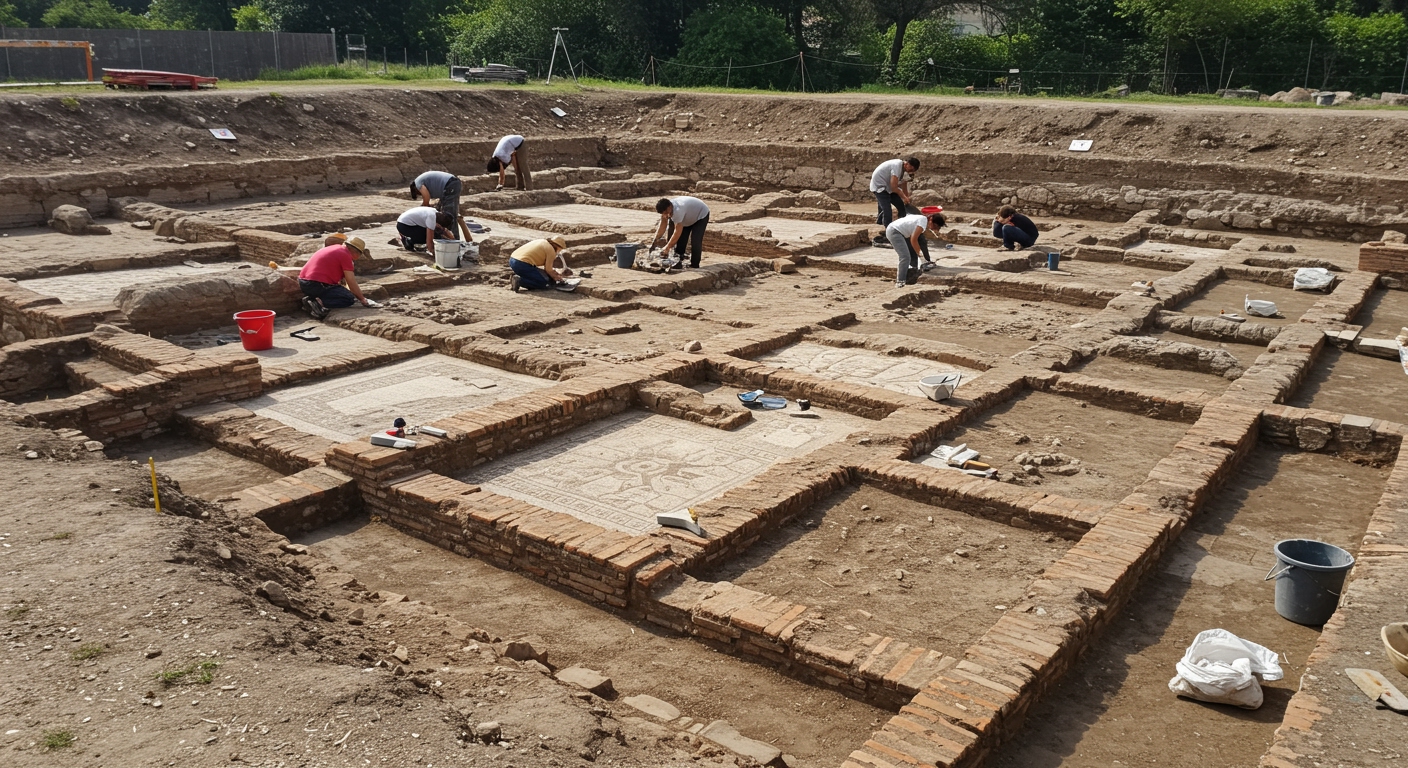
III. From Decline to Renewal: Anglo-Saxon and Viking London
Following the Roman withdrawal, London experienced a period of decline before new settlements and influences reshaped its identity.
A. Anglo-Saxon London: Lundenwic and the Shifting Landscape (5th Century – 1066)
- Abandonment of Londinium: The Roman city of Londinium was largely abandoned in the late 5th century, though the London Wall remained intact.
- Emergence of Lundenwic: By the early 7th century, a new Anglo-Saxon settlement called Lundenwic emerged about a mile west of the old Roman walls, along what is now the Strand. This “wic” (trading settlement) grew to house a population of 10,000 to 12,000 and was laid out on a grid pattern.
- Political Shifts: Lundenwic came under the control of various Anglo-Saxon kingdoms, including Mercia and Wessex, and saw the establishment of St. Paul’s Cathedral in 604 AD.
B. Viking Incursions and the Fortification of Lundenburh
- Viking Raids: From around 830 AD, London suffered frequent and devastating Viking attacks, including “the great slaughter” in 842 and raids by a large fleet of 350 ships in 851. The Great Heathen Army camped within the old Roman walls in 871.
- Alfred the Great’s Reconquest: In 886, Alfred the Great re-established English control, renewed fortifications, and encouraged the population to move back inside the old Roman walls, renaming the fortified settlement “Lundenburh”.[3]
- Danish Rule and Prosperity: London was later attacked unsuccessfully in 994 and besieged in 1013 by Sweyn Forkbeard. Cnut (Canute) became King of England in 1017, uniting Danes and Anglo-Saxons, and London prospered under his rule, becoming the most powerful town in England.
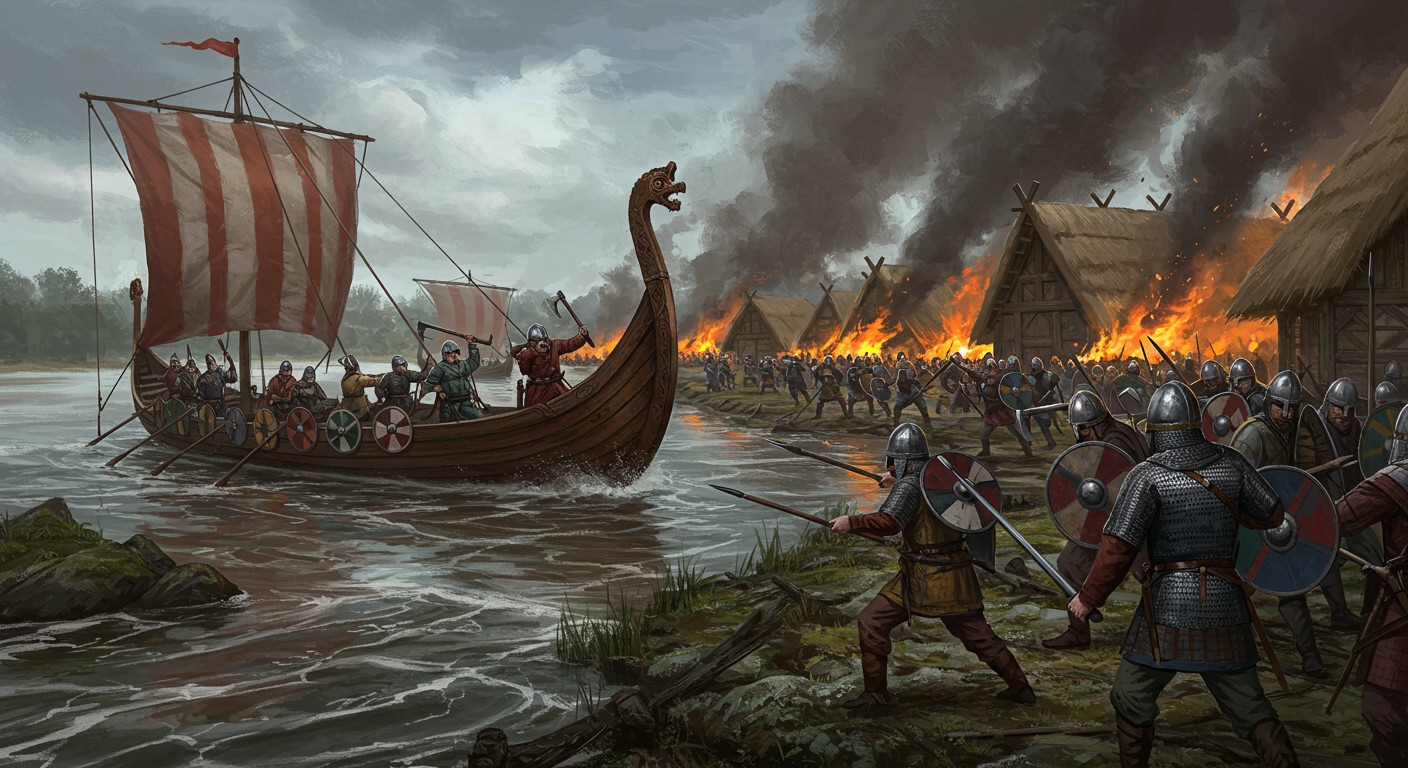
IV. Medieval London Daily Life: A Glimpse into the Middle Ages
The Norman Conquest in 1066 ushered in a new era, with London solidifying its position as a major European city. Daily life was shaped by economic activity, social structures, and enduring challenges, offering a fascinating look at medieval London daily life.
A. Urban Landscape and Housing
- A Maze of Streets: Medieval London was characterized by a dense network of twisting streets and narrow lanes.
- Timber and Thatch: Most houses were constructed from half-timbered frames, wattle and daub, often whitewashed. The constant threat of fire led to laws banning thatched roofs, though these were frequently ignored.
- Evolving Architecture: As the city grew more crowded, houses became taller, reaching three stories by the late 1200s, with upper floors often overhanging the streets. Wealthier citizens, particularly merchants and bankers, could afford stone houses.
B. Economy, Trade, and Governance
- Guilds and Commerce: The city’s economy was largely controlled by powerful merchant guilds, which ran the city and regulated trades like blacksmithing, weaving, and baking. Many street names, such as Threadneedle Street and Bread Street, reflect the trades once practiced there.
- Thriving Hub: London became a major trading center, attracting goods and merchants from the Continent and the Baltic.
- Emerging Self-Governance: Henry I granted London its first charter, establishing its legal system. In 1191, Richard I acknowledged London’s right to self-govern, leading to the election of its first mayor and aldermen in 1192.
- Population Growth: From an estimated 10,000-15,000 inhabitants in 1085, London’s population swelled to around 120,000 by the end of the medieval period.
C. Social Life, Religion, and Challenges
- Dominance of the Church: Religion, specifically Christianity, played a central role in daily life. St. Paul’s Cathedral, the largest building in medieval Britain by the 1320s, dominated the skyline. The Church ran most schools and hospitals.
- Pilgrimages and Saints: Londoners often went on pilgrimages and prayed to specific saints, with Thomas Becket being a prominent patron saint.
- Jewish Community: An important Jewish community existed in London, often working as moneylenders, though they were later forced to leave England in 1290.[4]
- Health and Sanitation: Plague was a recurring and significant threat, with 16 outbreaks between 1348 and the Great Plague of 1665, exacerbated by rudimentary sanitation.
- Childhood and Apprenticeships: Children’s lives were often short due to illness and accidents. Only the wealthy could afford schooling; poorer children often started working as young as seven, with apprenticeships typically beginning around age fourteen.
- Leisure and Entertainment: Despite hardships, there was time for play, with children enjoying activities like skating, sledging, and playing with dolls.
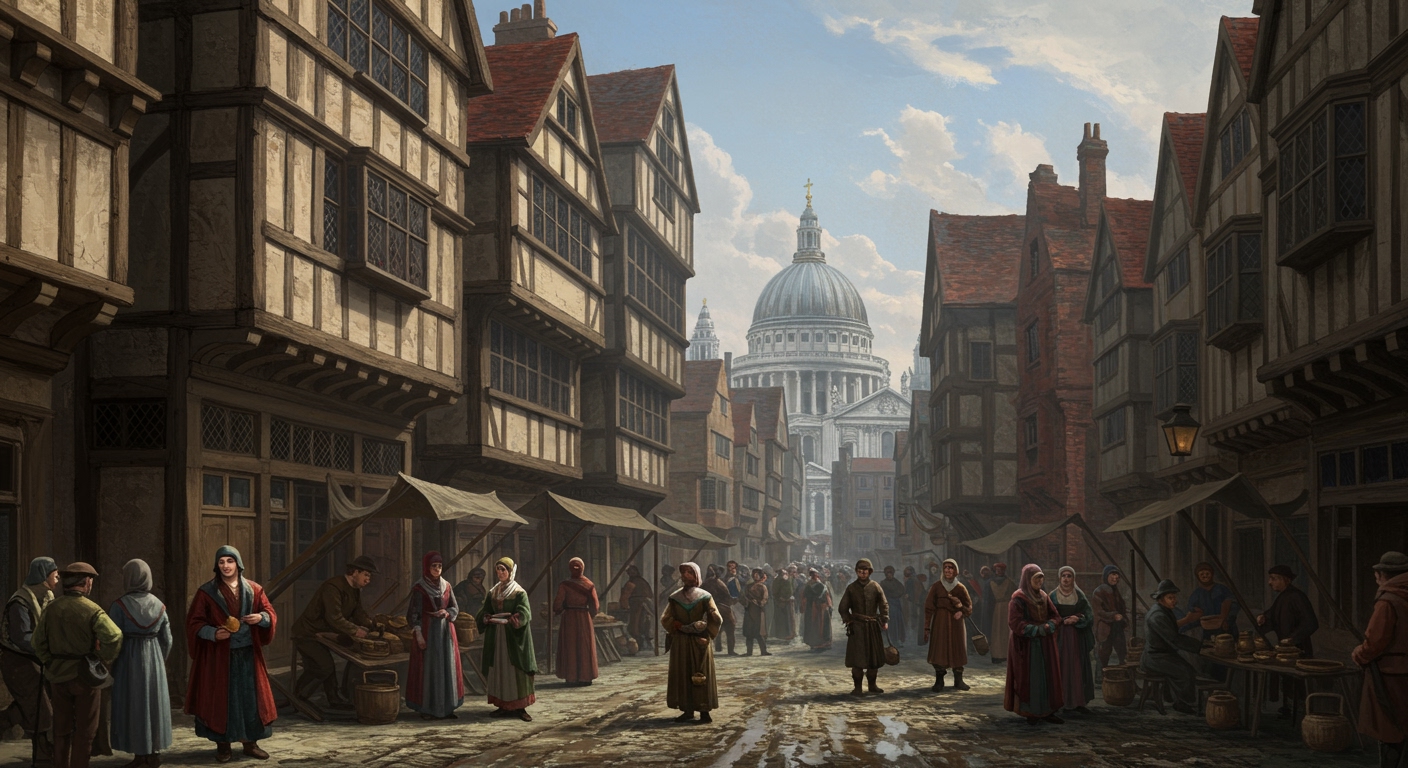
V. Conclusion: London’s Enduring Legacy
The ancient and medieval periods laid the fundamental groundwork for London’s enduring identity. From its prehistoric roots and its establishment as a vital Roman city to its Anglo-Saxon rebirth and its development into a bustling medieval metropolis, each era contributed to the unique character and resilience of London. The sites and stories from these early centuries continue to fascinate, reminding us of the deep historical currents flowing beneath the modern city.



